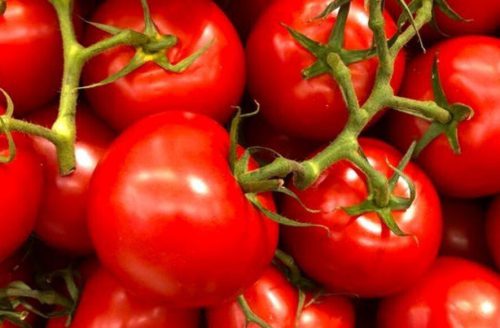Tips for Tomato Troubles

There is nothing quite like a home-grown tomato! Luckily, they are easy to grow. You don’t need to be an expert. All you need is soil, sunshine, and water. They can even be grown in a pot. Growing any plant can have its challenges though, even tomatoes. If you’re having tomato troubles, these tips may help.
Conditions
First, tomatoes need at least five hours of sunlight each day. They also like evenly moist soil. Too much water or too little can cause problems, like yellow leaves, wilting, or cracked fruit. Like many other plants, it is best to water them at the base of the plant, avoiding the leaves.
If your tomatoes turn brown on the vine and look like they are rotting from the bottom up, you’ve got blossom end rot. It is one of the most common problems tomato gardeners see. You may be seeing it now, as it is especially common with the first tomatoes harvested. The good news is that your plant is not diseased, and only a few of your tomatoes are likely to have it. It is caused by a lack of calcium and can be made worse by drought or too much nitrogen. To prevent it, be sure to keep your plants evenly moist throughout the growing season, and if you fertilize, use a product made especially for tomatoes. There are also commercial calcium supplements you can spray on affected plants if you want to go all out.
Tomatoes need warm weather, especially warmer overnight temperatures early in their development. Fluctuating temperatures can make the flowers fall off, which prevents fruit from developing. Plant your tomatoes outdoors only after nighttime temperatures stay above 55 degrees, which is usually very late May in southern Wisconsin.
Pests
Yellow, curled leaves may be a sign of aphids. They are tiny insects that live on the under sides of leaves, if you look closely. If you see them, firmly spray the leaves with your garden hose to knock the aphids from the plant daily until they are gone or use neem oil to treat them. You can often prevent infestations by planting nasturtium, zinnias, dahlias, or verbena nearby.
Slugs chew holes in tomatoes, burrowing inside to feast on them. To prevent slugs, plant seedlings with enough space between them for good air circulation and keep the leaves dry when watering. If you see slugs, the best way to get rid of them is go out after dark and pick them off the plants one by one. There are commercial products that can be used as well, including some organic ones.
Aphids and slugs are quite common, but keep in mind there are numerous pests that can affect tomato plants, including flea beetles, stink bugs, tomato fruit worms and hornworms. If you don’t know what’s eating your plants, do some research or ask a professional before any treatment.
Diseases
Many diseases can affect tomato plants, including fusarium and verticillium wilt, septoria leaf spot, anthracnose, bacterial leaf speck, and early and late blights, etc. There are honestly too many to list here. The good news is that you can prevent many of these issues. Select disease resistant tomato varieties, cover your soil with mulch, keep weeds under control, and water by setting your hose at the base of the plant, allowing a slow trickle of water to soak into the ground, or if you want to get fancy, use a drip irrigation system. Using a sprinkler can allow diseases to splash up on the leaves of the plant. Rotating your crops year to year is also a good idea.
There are several diseases that are probably familiar to gardeners in out area. If it has been a humid summer, you may see early blight. Early blight is a fungus that invades the leaves, stems and fruit, creating brown and black spots on the leaves. These can be up to the size of a dime. Green fruit also develops dark, sunken areas near the stem end. Late blight is another fungus that affects the leaves, stems and fruit of the tomato plant. It creates watery spots that affect the leaves and stems. It can cover the whole leaf, which may then dry up and turn brown. Fruits develop green or brown spots and may progress to rotting.
Verticillium wilt is another common disease that affects the stems of the plant and interferes with the plant’s ability to provide water to its leaves. Leaves turn yellow, starting at the bottom of the plant and moving upwards until the plant dies.
Some tomato diseases may be controlled with fungicide, but many are fatal. Diseased plants that cannot be treated should be removed from the garden and discarded immediately. It’s hard to let go of a plant you’ve been growing, especially when you have been looking forward to juicy ripe tomatoes! Luckily you can get tomatoes at a farmer’s market, road-side stand, or neighbor if all else fails. If this happens, be sure to rotate your crops the following year, choosing a different site for your tomato plants, and select those disease resistant varieties. Early Girl, Carolina Gold, Juliet, and Celebrity are good choices. Happy gardening!
